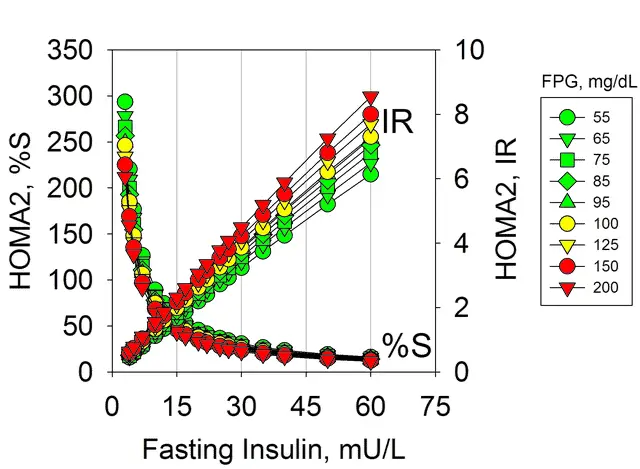This article will examine the HOMA-IR Test, also known as the Homeostatic Model Assessment. This test serves as a critical tool in diagnosing and understanding insulin resistance. Here, we will demystify the complex process of the test and elucidate its integral role in the early detection and treatment of insulin resistance and related conditions.
As the prevalence of insulin resistance increases globally among all age groups, the need for an effective and reliable diagnostic tool has become more urgent. Enter the Homeostatic Model Assessment for Insulin Resistance (HOMA-IR) – an essential test that quantifies insulin resistance in the body, guiding effective interventions for high-risk individuals.
Understanding the Role of Insulin and the Impact of Resistance
Insulin, a vital hormone secreted by the pancreas, is central to regulating the body’s glucose levels. Its primary function is to facilitate glucose absorption by the body’s energy-consuming cells, a process integral to the body’s overall energy metabolism.
Insulin resistance, on the other hand, occurs when the body’s cells become less responsive to insulin. As a result, glucose absorption is inhibited, leading to a surplus of glucose in the bloodstream. This, in turn, triggers the pancreas to secrete additional insulin, leading to an abnormally high insulin level in the blood. This condition is a precursor to various health issues, including diabetes, heart disease, and metabolic syndrome, highlighting the importance of early detection and intervention.
Deciphering the HOMA-IR Test
The HOMA-IR test, or Homeostatic Model Assessment – Insulin Resistance, is a relatively straightforward test that uses a mathematical formula to measure insulin resistance.
How Does the HOMA-IR Test Work?
The HOMA-IR test utilizes an individual’s fasting plasma insulin and glucose levels obtained after a fasting period of 8-10 hours. These two values are then employed in a specific formula:
[Fasting Glucose (mg/dL) * Fasting Insulin (µU/mL)] / 405
HOMA-IR Significance & Results Interpretation
A HOMA-IR value greater than 2.5 indicates insulin resistance, signaling therapeutic intervention is needed. Interventions often include lifestyle modifications like diet regulation and increased physical activity. Adherence to these changes is critical to reduce the risk of progressing to diabetes and other associated ailments.

In conclusion, the HOMA-IR test plays a vital role in our battle against insulin resistance and its devastating health consequences. It offers a quick, reliable way to gauge an individual’s insulin sensitivity and provides an actionable roadmap for treatment and prevention. As insulin resistance becomes more prevalent, health professionals must leverage tools like the HOMA-IR test to protect and promote public health.
References

Explaining the idea in a wonderfully clear and concise manner. thank you.